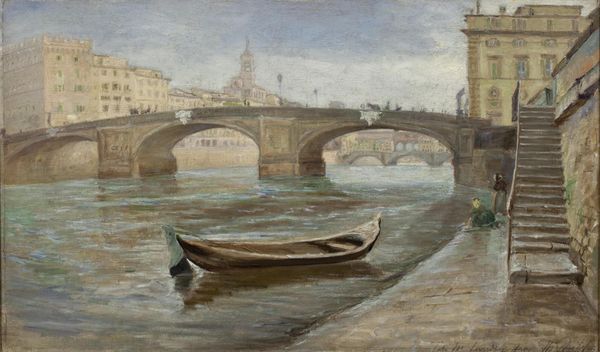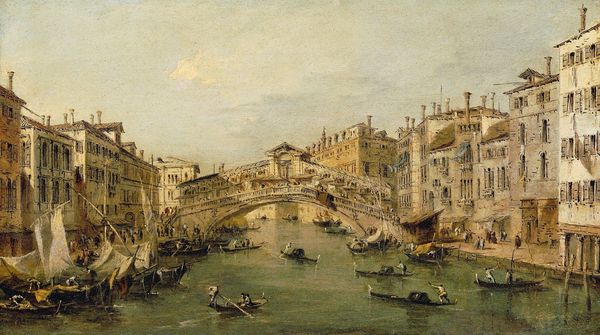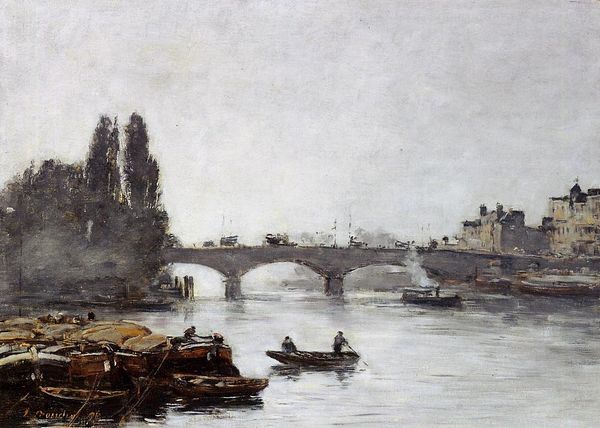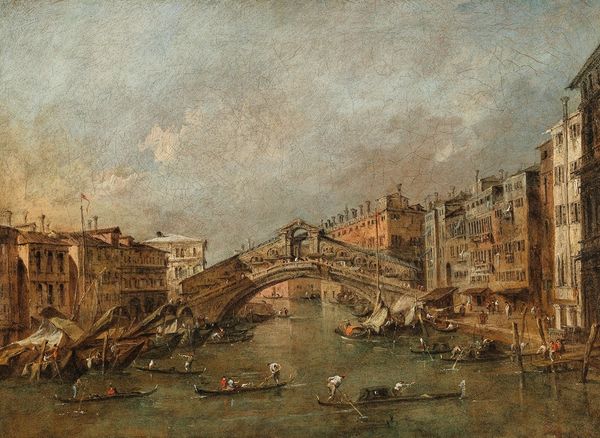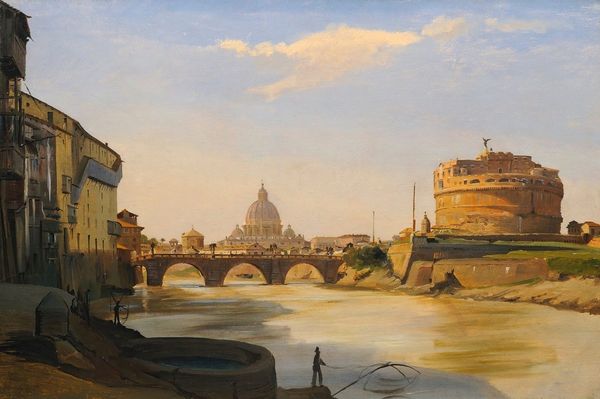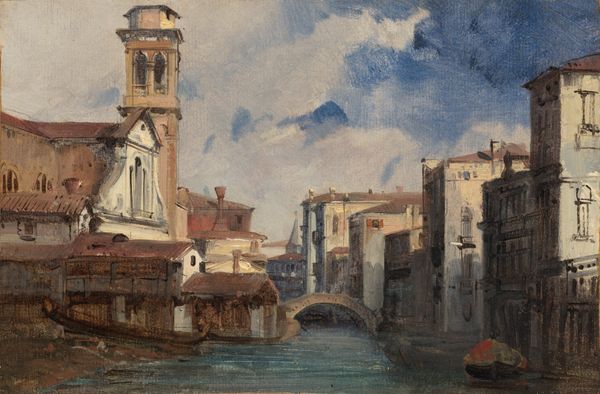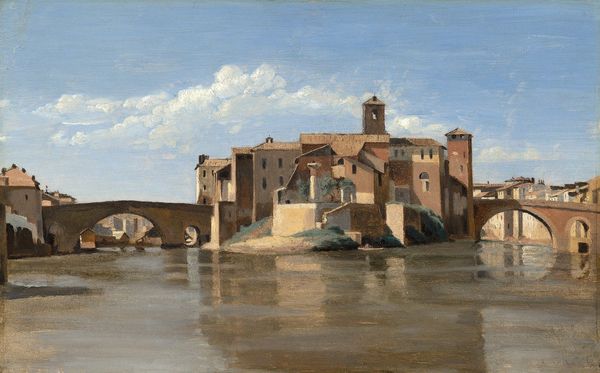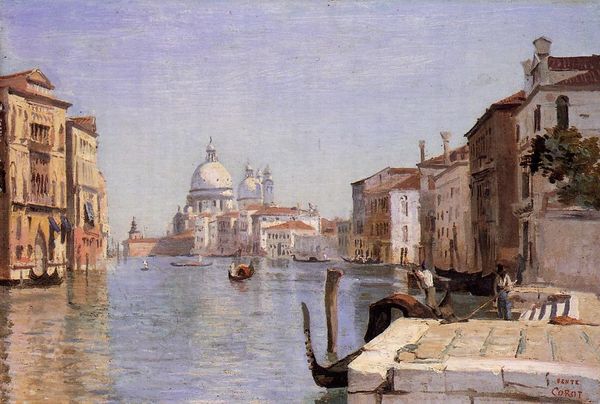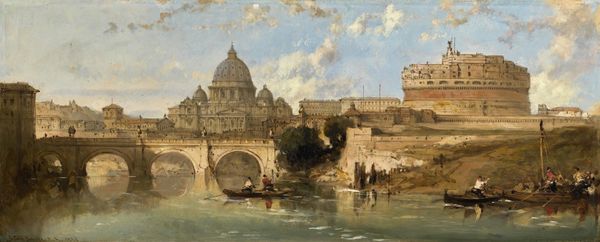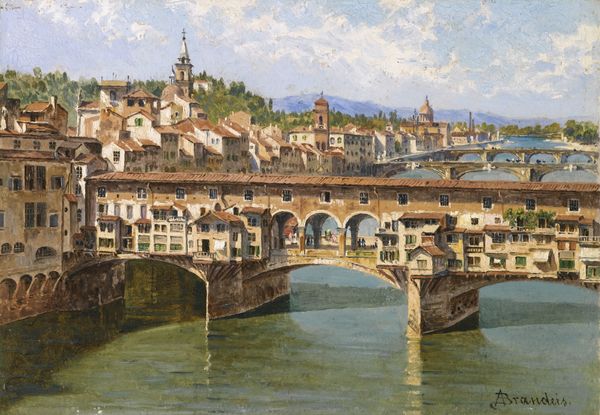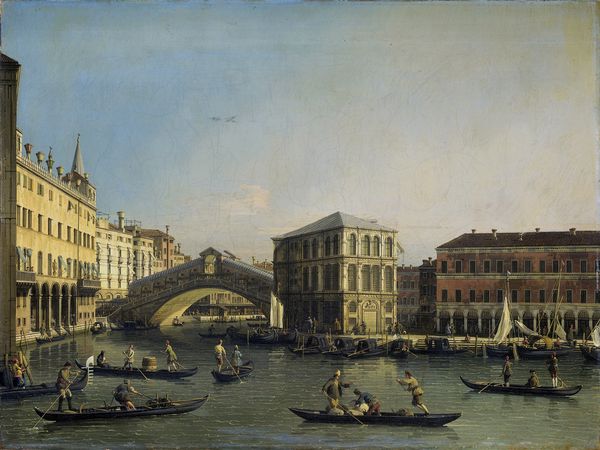
painting, oil-paint
#
painting
#
impressionism
#
oil-paint
#
landscape
#
oil painting
#
cityscape
#
genre-painting
#
realism
Copyright: Public Domain: Artvee
Curator: Before us is Frank Duveneck’s “The Bridges, Florence,” an oil on canvas created around 1880. What strikes you first about this piece? Editor: There’s a prevailing stillness. The earthy tones evoke a certain somberness, yet there's life implied by the presence of figures on the bridge. Curator: Precisely. Note how Duveneck deploys a restricted palette, a symphony of browns and muted grays, punctuated only by the pale reflections in the water. This monochromatic treatment is a formal device that focuses our attention on structure. Editor: But the restriction also speaks to the social conditions. What narratives are suppressed through this aesthetic choice? What of the working class in the city at this time? This isn't just an arrangement of forms; it is about who has the privilege to be seen and remembered. Curator: Consider the dynamism, despite your claim of stillness. The artist directs our gaze masterfully. The bridge serves as a compositional spine, balanced by the verticality of the distant tower. He is orchestrating how the eye travels through planes. Editor: Yet, isn't there a kind of flattening, too? The depth isn't convincing, which I find very evocative, not so much of place, but of how we build narratives of place and whose stories get obscured. It appears less interested in Florentine reality, than a projection of romanticised cityscapes palatable to specific patrons, at the cost of others. Curator: That perspective carries weight, however, his loose brushwork aims to suggest movement, it’s visible upon close examination in the water and sky. These flickering strokes create a sense of atmosphere and fleeting time. Duveneck seeks to capture something less fixed. Editor: A perspective of that era, to be sure. Though to see it as simply "capturing the ephemeral" feels like ignoring questions regarding what and whom he leaves out to prioritize painterly gestures and market demand. How do his choices influence historical narratives? Curator: Food for thought. This painting remains, after all, a complex object. Editor: Exactly. It compels us to ask the difficult questions.
Comments
No comments
Be the first to comment and join the conversation on the ultimate creative platform.
